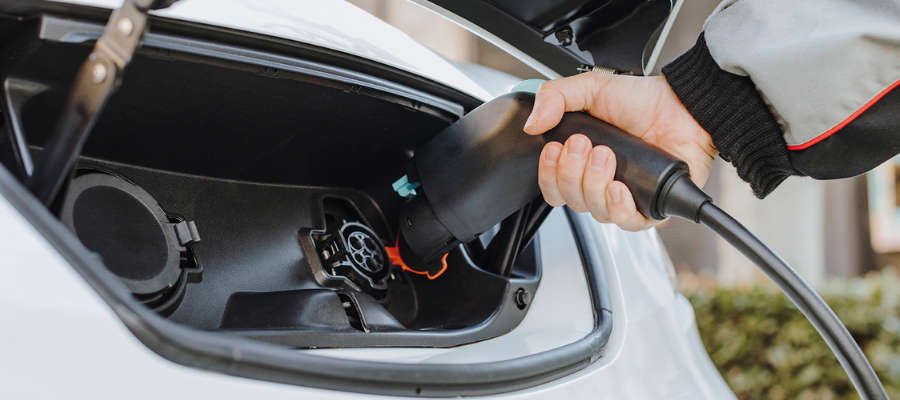🕒 Article read time: 2 minutes
Overcoming barriers to electric transport
Sponsored content

Beverley Wise, Regional Director UK & Ireland for Webfleet, explains how telematics technology can remedy concerns around fleet electrification.
Electric vans have become an increasingly practical option for fleet operators, as improvements continue to be made to battery range, vehicle choice and charging infrastructure.
Supply may have been impacted by the global semiconductor shortage, but registrations are still on the rise, increasing by 63 per cent in the year to May 2022, according to figures from the Society of Motor Manufacturers and Traders (SMMT).
The market has also been given a further boost following the recent announcement from government that funding for electric vans and charging infrastructure will now be prioritised, following the axing of the plug-in grant for cars.
ENERGY PRICE PRESSURES
But could spiralling energy prices add a fly to the electrification ointment? Research from Bridgestone and Webfleet has revealed that more than half of van and HGV fleet operators (53 per cent) expect high energy prices to dampen EV demand.
Industry data suggests that the cost of rapid charging an electric vehicle has increased by more than a fifth over the past eight months. And despite the price cap on electricity increasing from 21p to 28p per kWh in April, it is expected to rise again in October.
Petrol and diesel pump prices, however, have also soared – unwelcome records continue to be broken, along with the £2 a litre barrier at fuel station forecourts.
This trend has reinforced the fuel savings that can still be made charging an electric vehicle battery, compared to filling up with petrol or diesel.
TACKLING THE TCO KNOWLEDGE GAP
Despite electric vehicles still proving more expensive to lease or purchase upfront than their fossil-fuelled counterparts, total cost of ownership (TCO) also favours the electric van powertrain. With a lower cost per mile in fuel, and lower service, maintenance and repair costs, big savings are being realised by van fleets that have made the electric transition.
TCO calculations have consequently become increasingly important in fleet budgeting and electrification planning. According to our research however, more than a third (34 per cent) of fleet decision-makers are not confident calculating EV TCO.
Telematics solutions such as Webfleet can play an important role here, helping fleets determine TCO savings by generating data insights that enable comparisons to be more easily made between internal combustion vehicle running costs and real-world EV performance, based on vehicle driving patterns.
OPTIMISING EV PERFORMANCE AND UTILISATION
What’s more, dedicated EV management solutions are enabling fleets to keep a lid on their operational costs, while optimising performance and service delivery.
Using Webfleet’s Electric Vehicle Fleet Management, businesses can access information on real time battery levels, remaining driving ranges and energy usage for every fleet vehicle, alongside insights into charging processes and vehicle charge levels. The location of charging points can also be pinpointed by drivers, via their in-cab sat nav devices.
Furthermore, in light of our research revealing a concern about the cost impact of Clean Air Zones (CAZs) among almost two-thirds (62 per cent) of fleets, it should be remembered that telematics systems enable geo-fence alerts to be set up around CAZs to help ensure EVs are utilised in the most cost-effective way.
Such go-to innovations that support the transport sector’s green ambitions are pivotal to overcoming obstacles and concerns as we accelerate our drive to net zero.
*www.webfleet.com/en_gb/webfleet
Published On: 23/06/2022 16:00:15

Comments Section
If you are a Logistics UK member login to add comments.